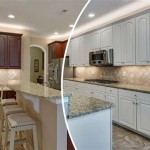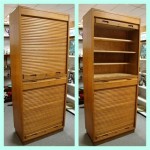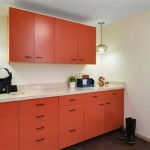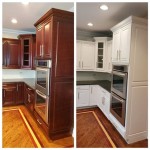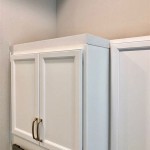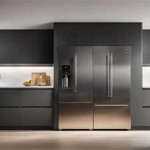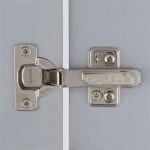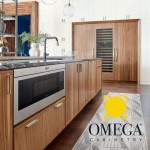Choosing the Right Door for Kitchen Cabinets
Kitchen cabinets are a significant investment in any home, impacting both functionality and aesthetics. The doors are arguably the most visible part of the cabinetry, dictating the overall style and influencing the perceived quality of the kitchen. Selecting the appropriate door style, material, and finish are crucial considerations for a successful kitchen renovation or upgrade.
The purpose of this article is to provide a comprehensive overview of the factors to consider when selecting doors for kitchen cabinets. This will encompass a discussion of popular door styles, common materials used in construction, and the implications of different finishing techniques. Understanding these elements will allow homeowners and design professionals to make informed decisions that align with their design vision and budget.
Door Style Options
The style of a kitchen cabinet door profoundly influences the overall aesthetic of the space. A wide range of styles are available, each evoking a distinct feeling and complementing different architectural designs. Some of the most prevalent styles include shaker, slab, raised panel, recessed panel, and glass-front doors.
Shaker doors are characterized by their simple, clean lines and a five-piece construction consisting of a flat center panel surrounded by a frame. This style is exceptionally versatile, working well in both traditional and contemporary kitchens. The shaker door gained popularity for its understated elegance and ability to blend seamlessly with various design schemes. Its simplicity also makes it a cost-effective choice compared to more ornate styles.
Slab doors, also known as flat-panel doors, offer a minimalist and modern aesthetic. They consist of a single, smooth panel without any framing or embellishments. Slab doors are often favored in contemporary kitchens or those with a minimalist design sensibility. The lack of detail emphasizes the clean lines and creates a visually uncluttered space. Materials like wood veneer, laminate, and acrylic are commonly used in the construction of slab doors.
Raised panel doors are characterized by a center panel that is raised above the surrounding frame. This creates a sense of depth and dimension, lending a more traditional and formal appearance to the kitchen. Raised panel doors often feature intricate detailing and decorative molding, making them a popular choice for traditional or classic kitchen designs. Styles range from simple, slightly raised panels to more elaborate designs with sculpted edges and ornate carvings.
Recessed panel doors, conversely, feature a center panel that is set lower than the surrounding frame. Similar to shaker doors in their construction, recessed panel doors offer a cleaner, more streamlined look than raised panel doors. They are compatible with both traditional and transitional kitchen styles, representing a middle ground between the simplicity of shaker doors and the formality of raised panel doors.
Glass-front doors incorporate glass panels within a frame structure. These doors provide a visual display of contents within the cabinet, adding interest and creating a sense of openness. Glass-front doors are frequently used on upper cabinets to showcase decorative items, dishes, or glassware. Different types of glass can be used, including clear, frosted, seeded, and textured glass, each providing a unique level of visibility and aesthetic appeal. The frame material can complement the surrounding cabinetry, creating a cohesive design.
Materials Used in Cabinet Door Construction
The choice of material significantly impacts the durability, appearance, and cost of kitchen cabinet doors. Common materials include solid wood, wood veneer, medium-density fiberboard (MDF), and laminate.
Solid wood doors are prized for their natural beauty, durability, and longevity. Wood offers a warm and inviting aesthetic, possessing unique grain patterns and characteristics. Common wood species used for cabinet doors include maple, oak, cherry, and walnut. Solid wood doors can be stained or painted to achieve a desired finish. The grain pattern and color variations of natural wood can add character and visual interest to the kitchen.
Wood veneer doors consist of a thin layer of real wood adhered to a core material, typically MDF or particleboard. This construction method offers the aesthetic advantages of solid wood at a lower cost. Veneer doors can be stained or finished in a similar manner to solid wood, providing a comparable appearance. However, veneer doors may be less durable than solid wood doors and are more susceptible to damage if exposed to moisture. Careful selection of core materials is crucial for the longevity of veneer doors.
Medium-density fiberboard (MDF) is an engineered wood product made from wood fibers and resin. MDF is a stable and consistent material that is less prone to warping or cracking than solid wood. It provides a smooth surface that is ideal for painting. MDF doors are a cost-effective alternative to solid wood and are often used for painted cabinet doors. While MDF is resistant to warping, it can be susceptible to water damage if not properly sealed or finished.
Laminate doors are constructed by bonding a decorative laminate layer to a core material, typically particleboard or MDF. Laminate doors are durable, easy to clean, and resistant to scratches and stains. They are available in a wide range of colors, patterns, and textures, including wood-grain imitations. Laminate doors offer a cost-effective and low-maintenance option for kitchen cabinetry. The quality of the laminate and the edge banding significantly impact the overall appearance and durability of the door.
Finishing Techniques and Considerations
The finish applied to kitchen cabinet doors significantly impacts their appearance, durability, and resistance to moisture and wear. Common finishing techniques include painting, staining, and applying a protective topcoat. The choice of finish should complement the door style and material, as well as the overall design aesthetic of the kitchen.
Painting cabinet doors provides a wide range of color options and allows for a smooth, uniform finish. Paint can be applied to solid wood, MDF, or veneer doors. The preparation of the surface is crucial for achieving a durable and flawless finish. Priming the surface before painting helps to ensure proper adhesion and coverage. Multiple coats of paint may be necessary to achieve the desired color and opacity. The type of paint used should be specifically formulated for cabinetry to ensure resistance to moisture, grease, and other kitchen contaminants.
Staining cabinet doors enhances the natural grain and beauty of wood. Stain penetrates the wood, highlighting its unique characteristics and adding depth and warmth. Staining is typically used on solid wood or wood veneer doors. The choice of stain color can significantly impact the overall aesthetic of the kitchen, ranging from light and natural tones to dark and rich hues. After staining, a clear topcoat is applied to protect the wood and enhance its durability. The type of wood species will influence the final color and appearance of the stain.
A protective topcoat is essential for cabinet doors, regardless of whether they are painted or stained. The topcoat provides a barrier against moisture, scratches, and stains, extending the life of the finish. Common topcoat options include polyurethane, varnish, and lacquer. Polyurethane is a durable and water-resistant finish that is ideal for high-traffic areas like kitchens. Varnish provides a classic and durable finish with a slightly amber hue. Lacquer offers a smooth and glossy finish but can be more susceptible to scratches and chips. The choice of topcoat should be based on the desired level of durability, appearance, and maintenance requirements.
Beyond standard finishes, specialized techniques such as glazing, distressing, and antiquing can be used to add character and dimension to cabinet doors. Glazing involves applying a thin layer of tinted material to highlight details and create depth. Distressing involves intentionally creating imperfections to give the doors a weathered and aged appearance. Antiquing techniques simulate the look of antique furniture, often involving multiple layers of paint and glaze. These specialized finishes can add a unique and personalized touch to the kitchen cabinetry.
Selecting the right door for kitchen cabinets involves understanding the various styles, materials, and finishes available. Careful consideration of these factors will ensure that the chosen doors not only complement the overall design of the kitchen but also provide durability and longevity.

Diffe Types Of Kitchen Cabinet Doors For Your Home

How To Buy Kitchen Cabinet Doors Now
:strip_icc()/101982525-de81fa76b52f47bb82fe1bbe3b3704fd.jpg?strip=all)
23 Stylish Ideas For Kitchen Cabinet Doors

Tür Fronten Für Küchen Mobelde Com Kitchen Cabinet Door Styles

Diffe Types Of Kitchen Cabinet Doors For Your Home

Fast Cabinet Doors Custom Replacement For Kitchen Cabinets Cupboards
Kitchen Cupboard Doors 10 Best Cabinet For Your New Architecture Design

Rustic Kitchen Cabinet Door Design Ideas Cabinetdoors Com

Cabinet Doors Drawers Replacement Revelare Kitchens

Our Renovation Kitchen Cabinet Door Styles That Will Never Go Out Of Style
Related Posts

